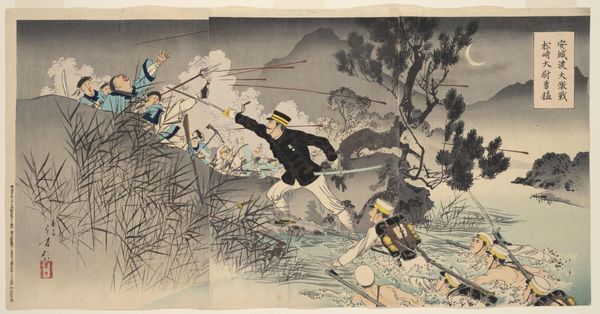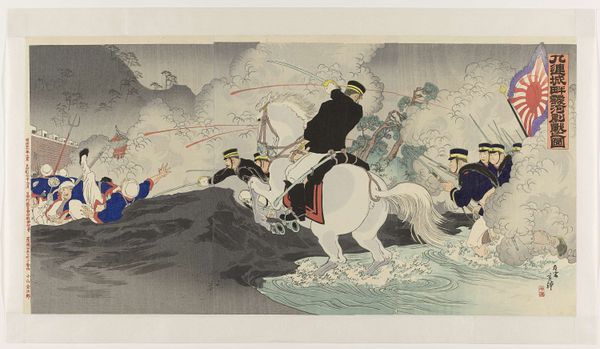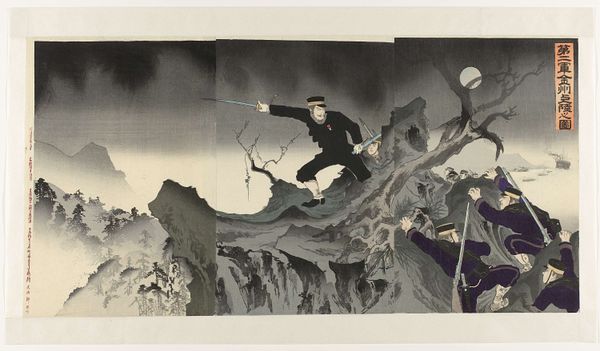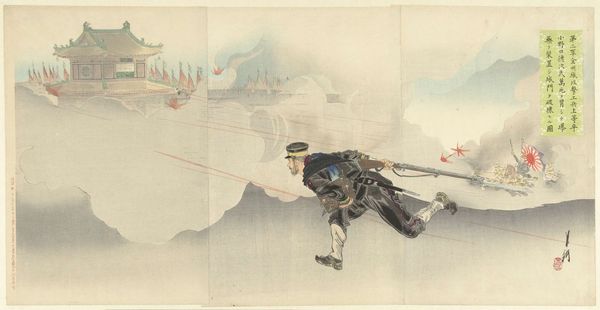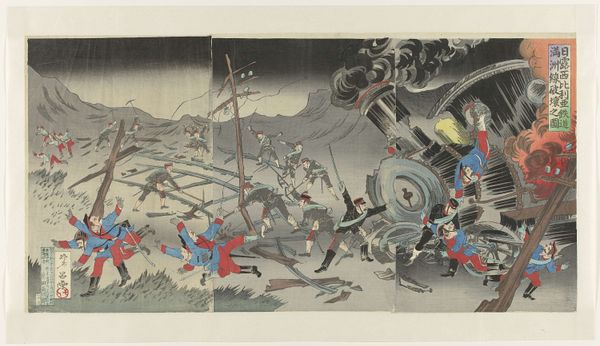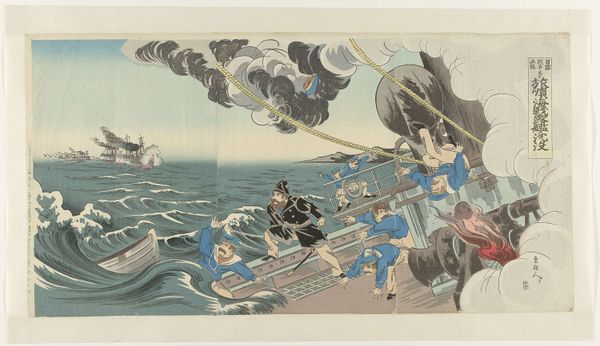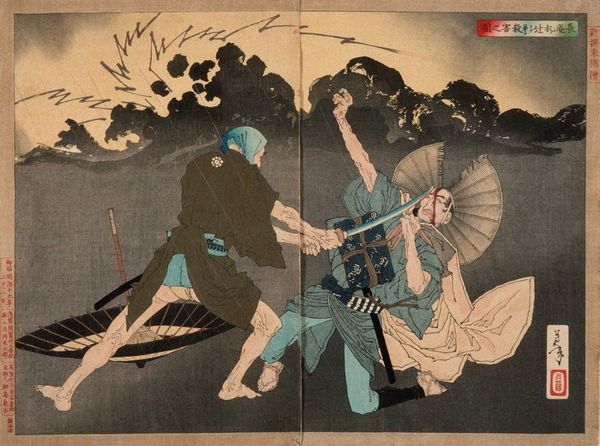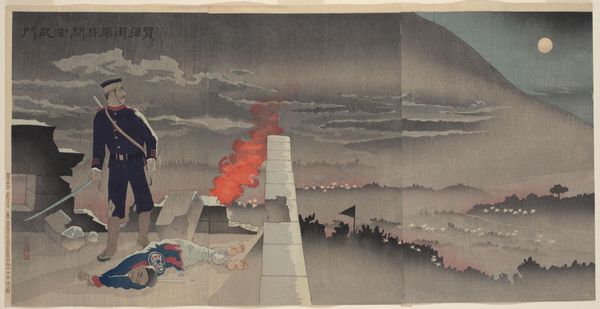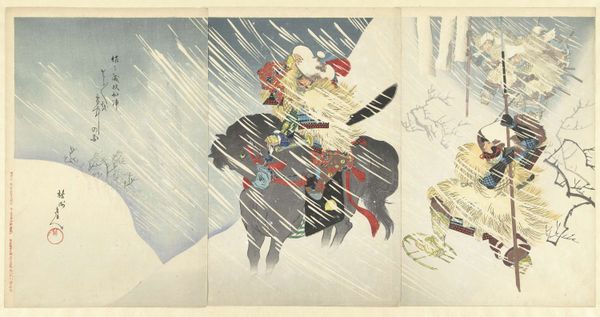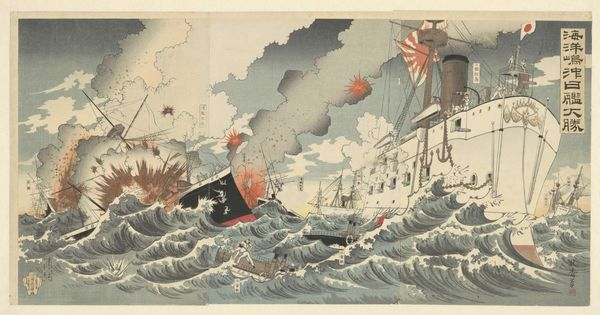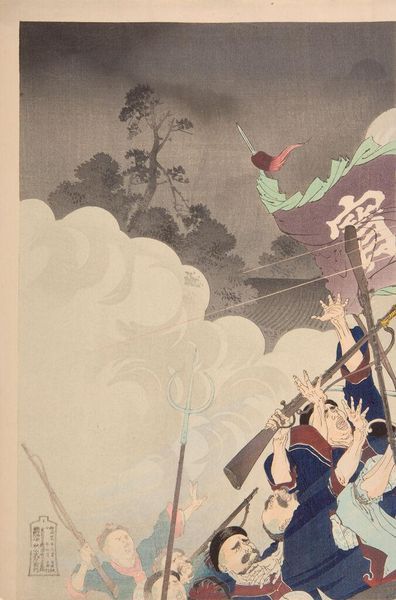
Dimensions: height 364 mm, width 695 mm
Copyright: Rijks Museum: Open Domain
Curator: Here we have “War Hero: Our Captain Lieutenant Hirose Takeo” created in 1904 by Ôkura Kôtô, housed right here at the Rijksmuseum. A fascinating piece of mixed media using watercolor and colored pencil— with print techniques, might I add— to achieve this dynamic rendering. Editor: My word, talk about drama! It’s like a snapshot of sheer panic. That figure leaping amidst the chaos... it’s almost operatic, wouldn't you agree? Curator: Exactly! Ôkura captured that raw emotion of the Russo-Japanese War in such a theatrical way, highlighting Hirose Takeo's dramatic courage under fire. What seems a maelstrom, even in those cool tones and blended techniques. The darks are offset with a distinct movement from right to left. It suggests a narrative almost defying its two-dimensionality, and seems highly evocative of ukiyo-e traditions in woodblock printing Editor: But it's not just action for action’s sake. Look at how Ôkura frames Hirose’s figure against that blinding explosion – the light rendering him vulnerable despite his bravery, right? It speaks to a certain ambiguity about the glorification of war, even whilst participating in its very glorification. Curator: That’s precisely what makes this work so compelling. There’s a tension between the subject's heroism, the obvious intention, and a sense of impending doom—that splash of muted palette, for instance. Do you find the layering significant to that end? Editor: Well the composition's all jagged edges and disrupted planes. So yes! Definitely reflective of an anxious modernism with that Japonisme aesthetic. Everything tilts; there's hardly any repose for the eyes! You sense a cultural moment on the cusp of massive shifts through pure form. Curator: Perhaps it reflects the chaos that resides both within and outside us. And Ôkura, so early into a modern aesthetic movement, captures the visual culture's energy... that transition from ukiyo-e into something reflective of Western artistic sensibility... It all resonates so powerfully across the years. Editor: Ultimately it shows us the eternal struggle of individual heroism, cast against the brutal backdrop, don't you think? And I rather appreciate how it is also simply a document from its time in our museum!
Comments
No comments
Be the first to comment and join the conversation on the ultimate creative platform.

